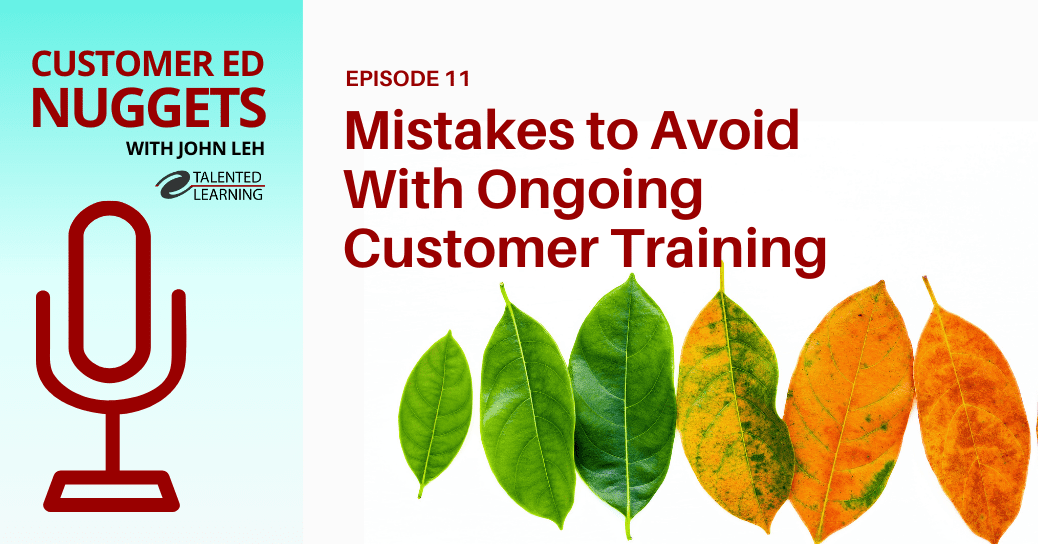
“How can we sell more content?” That’s the number one question on the minds of everyone who develops and sells learning-related content. Corporations, commercial for-profit training companies, associations, academic institutions and individual subject matter experts – all are designing, producing and selling educational content at a staggering pace.
But creating more content isn’t necessarily the best way to grow your business. Here’s why: The business model for selling online content is simple and incredibly attractive. Once you recoup your upfront investment in content development, the only significant expenses are the cost of marketing and maintaining that content.
In other words, after your core content costs are covered, each additional sale generates significantly higher profit.
It’s smart business to market a more limited selection of compelling courses and grow through success, rather than developing a huge library of courses and then try to figure out how you can sell it.
The obvious (or perhaps not-so-obvious) trick is to maximize sales revenue (and profitability) for every course you offer. The best way to do that is by putting “many lines in the water” and continually fishing for different ways to sell the same piece of content to various customers over time.
How does this “many-lines-in-the-water” strategy work? Below are eight ways you can increase total catch from the same piece of content using a specialized ecommerce learning management system as your technology backbone.
Do you want deep comparative data on the world’s top 40 learning systems vendors? Check out our 2023 Corporate Learning Systems Market Update report – now available for purchase and download! GET DETAILS HERE
8 Ways to Sell More Content, More Profitably
1) Sell More Content Directly to Individual Learners
This is the most common first step in building an ecommerce-based learning business. It typically starts by choosing a cloud LMS to host, deliver and track content (such as a course, video, webinar, how-to guide, whitepaper or reference tool). You upload the content, then promote it to potential customers through links in email messages, blog posts, paid ads, social media and other channels.
Interested prospects visit the LMS to discover details about the content, add it to a secure shopping cart, checkout and consume it at their convenience. With built-in LMS functionality, you can issue coupons, apply discounts and bundle content in ways that attract interested prospects and encourage them to buy – again and again.
2) Provide Personalized Subject Matter Expertise as a Premium Add-On
Any salesperson will tell you the best time to ask for an upsell is when you close a sale. With learning content, this can be a premium offer that lets buyers ask related questions online, via email or schedule formal consulting sessions to help apply concepts presented in the content.
If you create courses as a subject matter expert, this is a natural way to complement and enhance your core content, while building stronger customer relationships.
3) Provide Ability to Purchase Multiple “Seats”
Building upon the first scenario, let customers purchase multiple “seats” in the same online course. You can also offer volume discounts at multiple audience levels.
For example, a course may be priced at $100/person if one “seat” is purchased. However, it costs only $75/seat when 5 seats are purchased as a group or $50/seat when 10 seats are purchased.
An effective bulk purchase process should let buyers enter email contact information (or upload a spreadsheet) of everyone in the group. It should also let bulk purchasers create and distribute “access”/”registration” notices to group members, so they know a course has been purchased on their behalf.
To increase bulk purchases, you should proactively ask any individuals who complete content if they want to buy it for their team (or at least recommend it to others).
4) Provide Private, Branded Content Options
In the “multi-seat” scenario above, individuals and groups from different organizations (maybe even competitors) access the same content from the same location. In this kind of setting, features like discussion boards, assignments and leaderboards add little value, because learners may be apprehensive about sharing or revealing sensitive details.
To overcome this challenge and create a stream of premium revenue, content creators can offer custom-branded content to organizations, where only their users have access. To accomplish this, the LMS must have the capacity to offer both “parent” and “child” versions of content. This way, sellers can maintain and update a single “parent” version of the course, while changes cascade down to each private branded “child” environment. Sellers need only to customize each child course with a client-specific logo and page templates.
5) Provide a Private, Branded Learning Site
A private or “white label” learning site takes the branded content concept one step further. It essentially wraps the entire learning experience in a client-branded environment. This kind of scenario appeals to large organizations with diverse audiences who require a unified brand experience, along with sophisticated content delivery, notifications and communications capabilities, community forums, reporting and even specialized configurations and integrations with third-party systems and applications.
Do you want deep comparative data on the world’s top 40 learning systems vendors? Check out our 2023 Corporate Learning Systems Market Update report – now available for purchase and download! GET DETAILS HERE
6) Partner with Content Sponsors
Develop content with funding from a corporate, academic, association or government sponsor. For example, let’s say a certain learning technology consultant collaborates with diverse learning technology companies to deliver topical “thought leadership” webinars. Sponsors may help develop the content, include executives as co-presenters, case studies and co-own the content throughout its life.
If approached, many companies are willing to invest in this kind of thought leadership marketing to help expand and reinforce their core brand. For content sellers, this kind of sponsorship can minimize the cost of development, while expanding their market reach and accelerating the path to profitability.
7) Sell Advertising Space
Banner ads can be displayed within online course content – and just like the rest of the web, this can be presented tastefully or obnoxiously. You can earn incremental income by displaying relevant ad content automatically via Google or Yahoo networks.
Or you can sell space directly to advertisers on a daily, monthly or annual basis. An ecommerce-enabled LMS should be able to display ads in multiple locations – on a course details page, headers, sidebar, footer, in pop-up offers or in feature sliders.
8) Support Digital Credentials/Badges
Digital credentials and badges are verified certificates of course completion that can be shared electronically and posted on social media profiles, blogs and websites. Learners can earn a collection of knowledge and skills badges from multiple sources in lieu of a degree or as public proof of their continuing education.
When based on accepted standards like Open Badges, credential information is embedded in badge metadata that typically links back to the source of learning content. This creates brand awareness and ongoing value for learning content sellers, as well as badge recipients.
Conclusion
Every content seller wants to sell more content. These eight suggestions are only a starting point to spark ideas. It may help to test several approaches, keep what works, and then add more layers over time. After all, if you’re investing time, money and effort to go fishing, you might as well put multiple lines in the water. You have nothing to lose and only more customers to catch.
Thanks for reading!
Need Help Buying the Best LMS for Your Business Needs?
To jumpstart your learning system selection process, submit the form below for a free preliminary discussion with our Lead Analyst, John Leh.
Share This Post
Related Posts
The Future of Customer Education: Customer Ed Nugget 16
Customer education is rapidly evolving as organizations embrace new strategies and tech. What does this mean for the future of customer education? See what experts say on this Customer Ed Nuggets episode
Education Strategy Mistakes to Avoid: Customer Ed Nugget 15
What does it take to deliver a successful customer education program? It starts with a solid education strategy. Learn how to avoid common pitfalls on this Customer Ed Nuggets episode
Which LMS is Best for You? New Shortlisting Tool for 2024
How can you find the best learning system for your business? Our LMS shortlisting tool can help. Learn about the 2024 RightFit Solution Grid. Free, reliable guidance based on our independent research
How to Build a Learning-Based Business: Executive Q&A Notes
Building and selling online courses may seem easy, but building a profitable learning-based business is far more complex. Find out what successful leaders say about running this kind of business
The Rewards of Community Building: Customer Ed Nugget 14
What role does community play in your customer relationships? Find out why community building is such a powerful force in customer education on this Customer Ed Nuggets episode
Benefits of Training Content Syndication: Customer Ed Nugget 13
If you educate customers online, why should you consider content syndication? Discover 10 compelling business benefits in this Customer Ed Nuggets episode
Top Marketing Skills to Master: Customer Ed Nugget 12
Successful customer education programs depend on professionals with expertise in multiple disciplines. Which marketing skills lead to the best results?
How to Measure and Improve Partner Training ROI
An educated channel is a successful channel. But how do you know if your educational programs are effective? Learn from an expert how to evaluate partner training ROI
Mistakes in Ongoing Customer Training: Customer Ed Nugget 11
Customer education doesn't stop with onboarding. It pays to invest in ongoing customer training. Learn which mistakes to avoid in this Customer Ed Nuggets episode














FOLLOW US ON SOCIAL